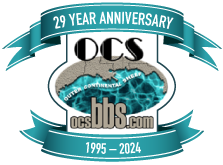OCS Offshore Well Tests
A well test is the execution of a set of planned data acquisition activities. The acquired data is analyzed to broaden the knowledge and increase the understanding of the hydrocarbon properties therein and characteristics of the underground reservoir where the hydrocarbons are trapped.
The test will also provide information about the state of the particular well used to collect data. The overall objective is identifying the reservoir's capacity to produce hydrocarbons, such as oil, natural gas and condensate.
Data gathered during the test period includes volumetric flow rate and pressure observed in the selected well. Outcomes of a well test, for instance flow rate data and gas oil ratio data, may support the well allocation process for an ongoing production phase, while other data about the reservoir capabilities will support reservoir management.
Offshore GOM Well Test Range: 1947 to most recent month reported.
Well Test Information
Well Test Information 1997 to Present
| Search Criteria | Results |
|---|---|
| Ar/Blk | Enter the Area/Block Code |
| Start & End Date | Enter the starting and ending test date range. For example you may want to find all wells having a test date between 9/1/1999 and 10/31/1999 in the East Cameron area. |
Table Definitions
| Abbrev. Name | Field Name | Description |
|---|---|---|
| Area/Blk | AREA / BLOCK CODE | The Area and designated OCS Block Number of the well at the surface location. |
| Lease | LEASE NUMBER | The number assigned to a lease by the regulatory agency having jurisdiction over mineral activity in the territory. |
| Well Name | COMPLETION WELL NAME | The name assigned to the completion by the lease operator. |
| API | API WELL NUMBER | A unique well identification number consisting of (from left to right) a two digit state code (or pseudo for Offshore), a three-digit county code (or psuedo for Offshore), a five digit unique well code, and if applicable, a two digit sidetrack code as defined in API Bulletin D12A. |
| Tub Str. | TUBING STRING CODE & NUMBER | A character string assigned to a completion zone based upon the number of tubing strings in the well bore which are capable of production. S=Single, D=Dual, T=Three, Q=Four, V=Five. A Number assigned to a completion zone beginning with 1 for the first zone completed and incremented by 1 for any additional zones completed thereafter. |
| Field | FIELD NAME CODE | The field in which the well is located. |
| Operator | MMS OPERATOR | The business entity, individual or agency with whom MMS does business or exchanges information. |
| Test Date | WELL TEST START DATE | The date that the identified test was run. The tests involved are: drillstem test, production, initial potential, reservoir limits, etc. |
| Type | WELL_TST-TYPE_CD | Indicates the type of well test conducted. BHP - Bottom hole pressure test COM - Well completion test CPM - DST - Drill stem test IP - Initial potential test POT - Well potential test QTR - Quarterly well completion test SEM - Semi-annual well completion test |
| Prod Meth | PROD METH CODE | Indicates the method by which the well test was conducted. EP - Electrical pump method of well completion testing FL - Flowing method of well completion testing GL - Gaslift method of well completion testing JP - Jet pump method of well completion testing RP - Rod pump method of well completion testing UP - Unknown method of well completion testing |
| Test Time | WELL TEST TIME | The time it iakes to conduct a well test. |
| Choke | CHOKE SIZE | The size in 64th’s of an inch, of the choke used to control a well test. |
| Casing Pressure | CASING PRESSURE | The pressure (psig gauge) in the space between the surface casing and the producing casing during a well test. |
| Tubing Pressure | TUBING PRESSURE | The pressure (psig gauge) recorded in the tubing during a well test while open to flow. |
| Shut-In Pressure | SHUTIN PRESSURE | |
| Gravity | API GRAVITY | Gravity (weight per unit of volume) of crude oil or other liquid hydrocarbon expressed in degrees API where a specific gravity of 1.0 is the equivalent of 10 degrees API. |
| GOR | WELL TEST GAS OIL RATIO | The numberobtained by dividing the quantity, in scf, of gas produced by the quantity, in barrels, of liquid hydrocarbons produced during a well test. Round (Gas_24_hr_rate*1000)/Oil_24_hr_rate |
| G SPGR | WELL_TST_G_SPGR | The ratio of the mass of a given volume of a substnce at a given temperature and pressure to the mass of an equal volume of standard substance at the same temperature and pressure. For vapors, the standard substance is air (dry ans free of carbon diaoxide) and for liquids, the standard substnce is water. A number obtained by dividing the density of the gas produced during the well test by the density of air ( at the same temperature and pressure. |
| Disposition | TST_PROD_DISPTN | An indicator of the method used to dispose of th production obtained during a well test. See OCSIS table 7050. |
| Oil (Bbls) | OIL TEST VOLUME | The quantity of oil produced while performing a well test. |
| Gas (MCF) | GAS TEST VOLUME | The quantity of gas produced while performing a well test. |
| Water (Bbls) | WATER TEST VOL | The quantinty of water produced while conducting a well test. |
| BS&W | BS&W PERCENTAGE | The solid impurities and foreign matter (including sand, silt, scale and formation water, etc.) contained in curde oil as it is recovered from the formation. |
| Oil 24 (Bbls) | OIL_24_HR_RATE | The extrapolated volume of oil that would be produced in a 24 hour period. |
| Gas24 (MCF) | GAS_24_HR_RATE | The extrapolated volume of gas that would be produced in a 24 hour period. |
| Water 24 (Bbls) | WATER_24_HR_RATE | The extrapolated volume of water that would be produced in a 24 hour period. |
| Prod Code | WELL_TST_PROD_CD | Indicates the minerals produced during a well test. O=Oil, G=Gas. |







